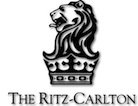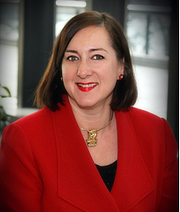CEO Blog - Advice for CEOs on growth and scaling
The Best Customer Service Uses Ritz-Carlton Radar On, Antenna Up Model

 Does your company offer the best customer service?
Does your company offer the best customer service?
Most every company claims to have the best customer service—but would their customers agree? When running a midsize business, you face an ongoing battle to effectively connect and engage with your customers. Employees constantly multi-task and resources are stretched. As a result, customer experience management often falls to the back burner.
This is a crucial mistake.
That's why businesses who want to achieve the best customer service take notes from Ritz-Carlton. They take a personal, hands-on approach to customer care that any business can learn from. Even mega gadget guru Apple uses their' "Legendary Service" model to help craft their loyalty and customer experience strategy.
Ritz' “anticipatory service" model is paramount to their success in customer service. This means seeking out the customer's unanticipated and unvoiced needs. This could be as simple as replacing an empty tube of toothpaste while a guest is out on business, or handing Roarie the stuffed Ritz-Carlton lion to a crying toddler. Even better, this type of approach can be scaled to a business of two employees to 20,000 employees.
Ritz-Carlton's Secret to the Best Customer Service: Radar On, Antenna Up
"The reality is if you are just reacting to customers that’s not good enough to be competitive."

I was lucky enough to sit down with Diana Oreck, vice president of the The Ritz-Carlton Leadership Center. She revealed how the company implements anticipatory service, as well as other secrets to their customer service super sauce. Read what she had to say and get some excellent customer service tips:
Q: One of the Ritz-Carlton Gold Standards is "anticipate unexpressed needs." Why is this important to customer service success and how do you train employees to recognize and act on unexpressed needs?
A: It’s very important because legendary service is about surprise and delight. It’s not robotic, it’s not scripted. Golden nugget: You cannot give legendary service if you’re on autopilot. So we do a lot of discussion around “radar on, antenna up,” and we actually provide scenarios. We have a daily lineup everyday in every [Ritz-Carlton] hotel around the world. And we will have something called “Radar on, Antenna Up, and Focus.” One of the scenarios might be a young couple comes into the restaurant with a two-year-old baby. What should you do? Then we discuss, you bring a high chair, you bring crayons. We have hundreds of scenarios like that. Because we know that it’s going to be through the unique, memorable and personable experiences that our customers are going to be fully delighted and engaged.
Q: Obviously desired experience will vary depending on the job, but does Ritz-Carlton have standard characteristics, competencies or personality traits they look for when filling all customer service positions?
A. Absolutely. We want to make sure they have the spirit to serve. We want to make sure that they are caring. We want to make sure that they are the type of people that will take initiative because the reality is if you are just reacting to customers that’s not good enough to be competitive. We want people that really know how to anticipate. You’ve got to be quite sociable. You want to be interested in learning so if there’s an issue you want to get to the bottom of it.
Q: What are the biggest mistakes companies make when training customer service staff?
A: They're not being specific enough. They’ll say things like “Give great customer service.” Well that’s nice, but people need a road map. Never assume anything, make sure you have your service standards written down and allow people to observe you in action. Don’t assume that their mother or father, or previous employer taught them what really great service looks like. Have a written service strategy.
Q: What sort of things should be in that strategy?
A. We’re very lucky because again, we really do believe that less can be more if you are choosing very powerful language. And so our three steps of service are straight to the point. No. 1, A warm and sincere greeting, use the guest’s name; No. 2, anticipation and fulfillment of each guest’s needs; and No. 3, fond farewell, give a warm goodbye and use the guest’s name. Simple and to the point. And to us our service strategy applies to the internal customers as well as to our team mates; they should apply to both.
Q: Ritz-Carlton puts a lot of emphasis on successful new hire orientation. Why is this important for customer service training?
A: A lot of companies have a notion that employee orientation really needs to be a data dump of the company, and statistics and who’s doing what. It isn’t. What we are looking for at orientation is passion. It’s all about them and it’s all about culture. We feel that orientation needs to be significant emotional experience. Because think about it: you are making a very big decision in your life, to either start a job or change a job. So our two days of orientation, they are solely revolving around our culture, which we call the gold standards.
Q: Is this also something that helps with customer service employee satisfaction and retention?
A: Yes, it’s about engagement. I will give you an example. The lodging industry as a whole tends to run a 60-70 percent turnover in a year. Here at Ritz Carlton we run in the low 20s. It’s a huge difference.
Q: What metrics or qualitative data does Ritz-Carlton use to measure customer service training success (How do you know it's working)? How do you collect this data?
A: Oh yes, we poll our guests once a month. The Gallup organization sends out surveys to 38 percent of guests that stayed the month before. It’s done randomly with the hope we will get 8-10 percent return. We live and die by that guest engagement number. This is the sum of responses to about 30 questions, including "How likely is that guest to recommend Ritz Carlton? Were they delighted and satisfied with their stay? If there was a problem, did we take care of their problem?" We know if that guest engagement number goes up, our training programs have been successful.
A guest article by Ashley Furness. 
Ashley Furness is a CRM Market Analyst for Software Advice, where she writes about customer service, marketing and sales strategy.
Topics: Customer Intimacy, Customer Satisfaction, customer service
Sun, Nov 25, 2012Related Articles

- Press Releases
- Careers
- Case Studies
- Marketing Consultant Company
- Marketing Strategy Consultants
- Marketing Plan Consultants
- B2B Marketing Consultants
- Virtual CMO
- Marketing Consultant Outsourcing
- Fractional CMO
- What is a Fractional CMO
- Healthcare Marketing Consultant
- Marketing Consultant Houston TX Texas
- Marketing Consultant Texas TX
- Marketing Consultant Bay Area
- CEO Blog
- Ebooks Plus
- Executive Marketing Consultants
- Product Marketing Consultants
- B2C Marketing Consultants
- Virtual Marketing Consultants
- Senior Marketing Consultants
- Temporary CMO
- Hire a CMO
- Fractional CMO Salary
- Fractional CMO Responsibilities
- Marketing Consultant Austin TX Texas
- Marketing Consultant Dallas TX Texas
- Marketing Consultant San Antonio
- Helping Private Equity
- Private Equity Blog
- Leadership Team
- Privacy Policy
- Business Marketing Consultants
- Strategic Marketing Consultants
- Marketing Technology Consultants
- Sales and Marketing Consultants
- CMO Job Description
- CMO Salary
- Fractional CMO Agency
- Fractional CMO Services
- CPG Marketing Consultant
- Marketing Consultant San Diego
- Partners
Houston, TX 77056
© 2023 Chief Outsiders


